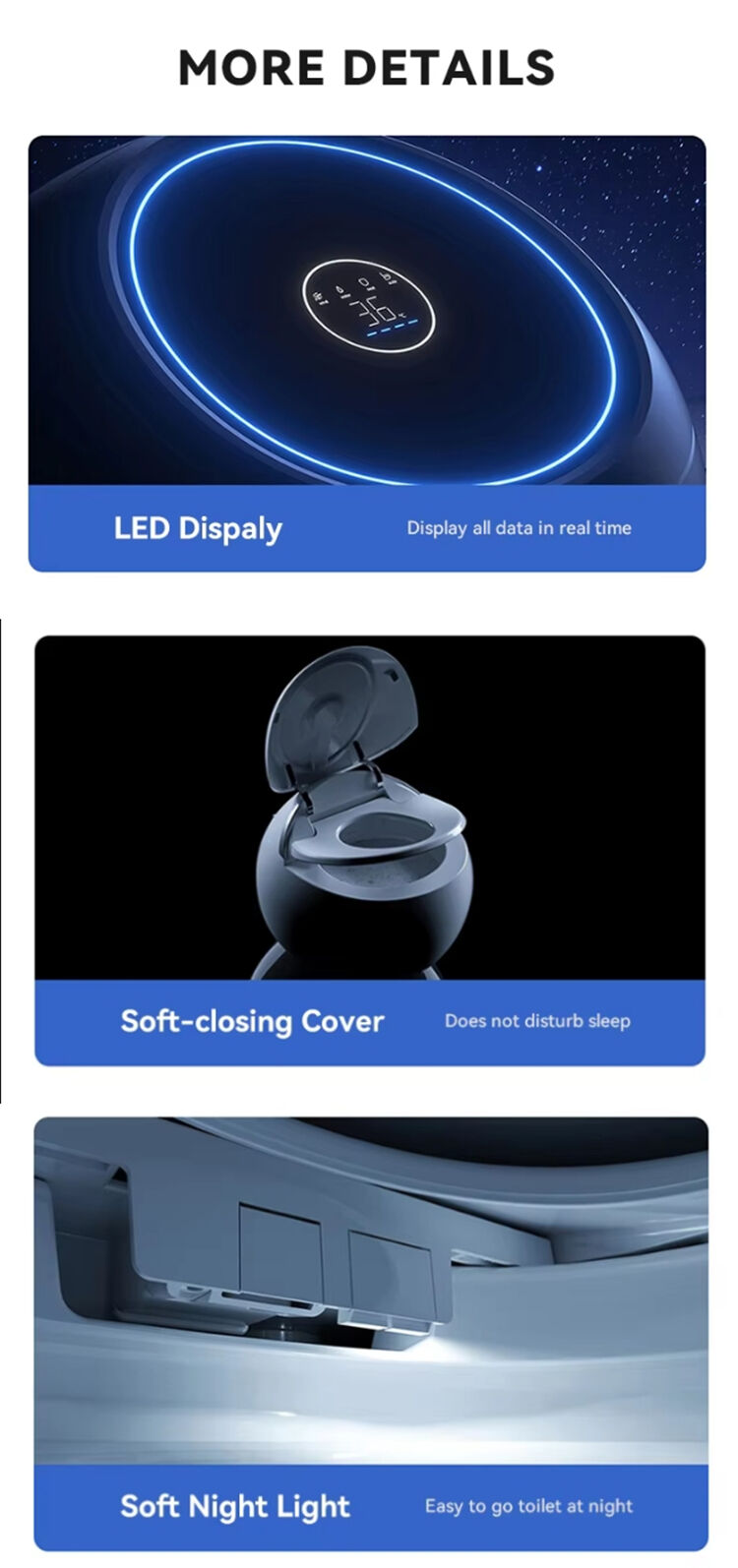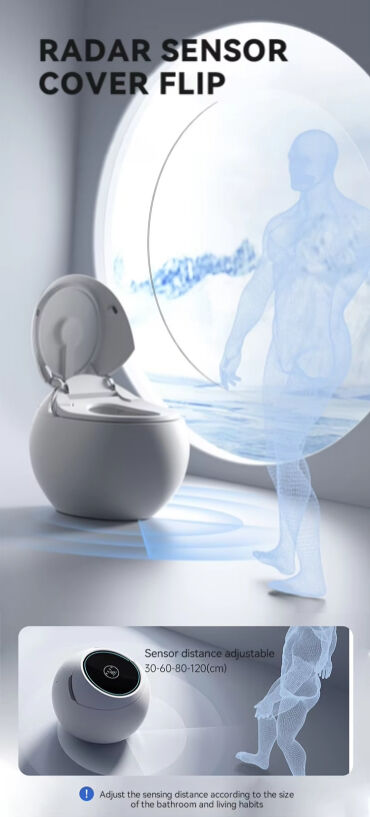What Makes a Smart Toilet More Hygienic and Convenient?
A smart toilet is more than just a bathroom fixture—it’s a high-tech device designed to boost hygiene and make daily routines easier. Unlike traditional toilets, smart toilets come with built-in features like automated flushing, self-cleaning functions, and temperature control. These features solve common bathroom frustrations, from messy manual flushing to cold seats. Let’s explore why a smart toilet stands out for its hygiene benefits and convenience.
1. Superior Hygiene: Less Touch, More Clean
A smart toilet reduces the need to touch surfaces, cutting down on germ spread. It also has tools to keep itself clean, making your bathroom healthier.
- Touchless operation: Most smart toilets use motion sensors. When you stand up or step away, they flush automatically—no need to press a handle. This means fewer germs on your hands, especially important for families or shared bathrooms. Some models even open and close the lid automatically when you approach, so you never have to touch a potentially dirty surface.
- Self-cleaning nozzles: Smart toilets have built-in bidet nozzles that clean you with water (replacing toilet paper). After use, these nozzles clean themselves with hot water or UV light to kill bacteria. This prevents the buildup of grime that can happen with manual bidets or toilet paper holders.
- Antibacterial materials: Many smart toilet seats are made with antibacterial plastic or ceramic. These materials resist mold, mildew, and bacteria growth, even in humid bathrooms. The bowl may also have a special glaze that repels dirt, making it harder for stains to stick.
- Hot water cleaning: The bidet function uses warm water, which is more effective at cleaning than dry toilet paper. This reduces irritation and leaves you feeling fresher, while also cutting down on toilet paper waste (good for the environment too).
For anyone worried about germs or hygiene, a smart toilet takes the hard work out of keeping the bathroom clean.
2. Convenience Features for Daily Comfort
A smart toilet is designed to make using the bathroom more comfortable, with features that adapt to your needs.
- Heated seats: No more cold shocks on winter mornings. Smart toilet seats let you adjust the temperature (usually 30–40°C) to your liking. Some even have memory settings, so each user can save their preferred heat level.
- Customizable water pressure: The bidet function lets you control how strong the water spray is—gentle for kids, stronger for adults. You can also adjust the spray position, ensuring it hits the right spot every time.
- Night lights: Many smart toilets have soft LED lights that glow in the dark. This means you don’t have to turn on bright bathroom lights at night, making midnight trips safer and less jarring for your eyes.
- Deodorizers: Built-in fans or carbon filters in a smart toilet reduce bad smells. They kick in automatically after flushing, keeping the bathroom fresh without needing to spray air fresheners.
These small touches add up to a much more pleasant experience, especially for anyone with mobility issues or specific comfort needs.
3. Water Efficiency and Easy Maintenance
Smart toilets aren’t just high-tech—they’re also practical, saving water and reducing upkeep.
- Dual-flush options: Like some traditional toilets, smart toilets let you choose a small flush (for liquid waste) or a large flush (for solid waste). But a smart toilet often adjusts the water amount automatically based on what’s needed, using even less water than manual dual-flush models. This can cut your water bill by 20–30%.
- Easy to clean: The smooth, seamless design of a smart toilet (no crevices between the tank and bowl) makes wiping down the outside simple. Some models even have a “power clean” function that sprays the bowl with high-pressure water, loosening dirt so you spend less time scrubbing.
- Leak detection: Advanced smart toilets can sense leaks in the water line and alert you with a light or app notification. This prevents water damage and keeps your bathroom dry, avoiding mold growth that harms hygiene.
4. Accessibility for All Users
A smart toilet is designed to work for everyone, including people with mobility issues or specific needs.
- Adjustable height: Some smart toilets let you raise or lower the seat height, making it easier for kids, seniors, or people with knee problems to sit and stand.
- Remote control: Many come with a small remote (or app) to operate features like flushing, bidet spray, or seat heat. This is helpful for anyone who can’t reach the toilet’s controls easily.
- Gentle modes for sensitive skin: The bidet function often has a “soft” setting with lower water pressure and cooler temperatures, perfect for babies or people with sensitive skin.
These features make a smart toilet a great choice for households with diverse needs, ensuring everyone can use the bathroom safely and comfortably.
FAQ
Is a smart toilet hard to install?
It’s similar to installing a traditional toilet, but you’ll need a power outlet nearby (most smart toilets plug in). If you’re not comfortable with wiring, hire a plumber—they can set it up in a few hours.
Do smart toilets use a lot of electricity?
No, most are energy-efficient. Features like heated seats or night lights use small amounts of power, adding only a few dollars to your monthly bill.
Can a smart toilet work without a bidet function?
Yes, but most models include it. The bidet is a key hygiene feature, but you can choose to use toilet paper instead if you prefer.
How often do I need to clean a smart toilet?
Wipe the seat and bowl weekly with mild cleaner, like you would a traditional toilet. The self-cleaning nozzles and power flush reduce the need for deep cleaning—usually once a month is enough.
Are smart toilets expensive?
They cost more upfront than traditional toilets, but prices range from mid-range to high-end. Many users find the water savings (less toilet paper, lower water bills) and convenience make them worth it over time.


